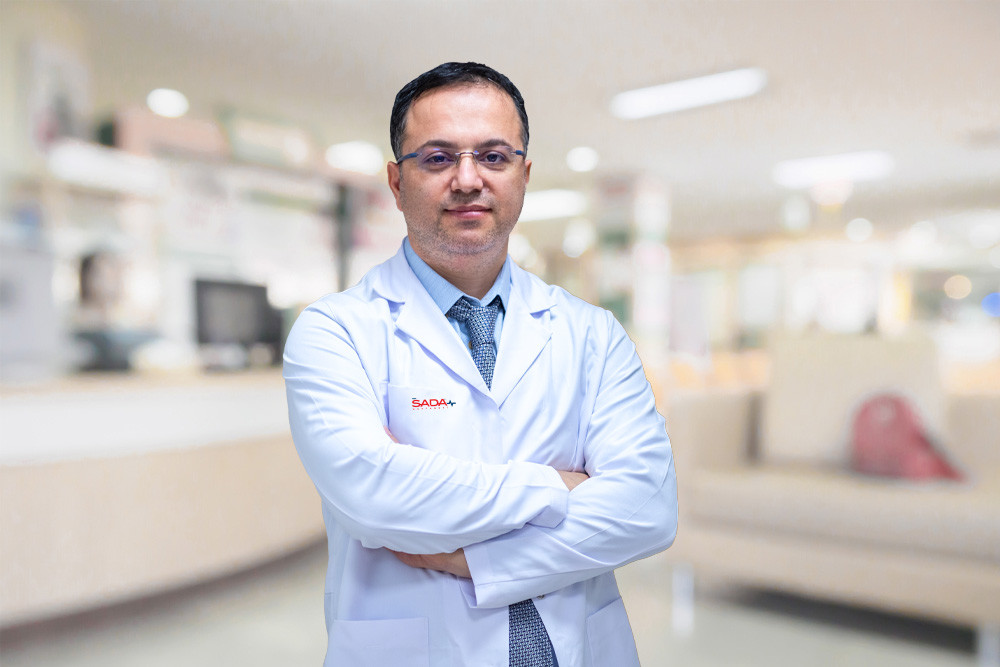
There are many treatment options for obesity. However, an operation should only be considered if diets, inpatient cures, medication, exercise and nutritional therapy and psychological support do not show any lasting success. Our clinic and obesity center offers a comprehensive treatment concept for the prevention and therapy of obesity.
OBESITY CLINIC
The term "bariatric surgery" refers to a variety of surgical interventions aimed at assisting those suffering from morbid obesity to lose weight. The surgeon either reduces the stomach in the course of a gastric reduction surgery or creates a "diversion" during such so-called bariatric operations. The doctor not only remodels the stomach, but also the intestinal tract, in this type of obesity surgery. All interventions aim to reduce the stomach's capacity, i.e. its volume, so that the affected person is full sooner.
OPERATIONS
GASTRIC BYPASS: The Roux-Y gastric bypass is the standard procedure. In the first two years after the gastric bypass, this can reduce obesity by 60 to 70%. On the one hand, this is due to the fact that the body absorbs food more poorly as a result of the stomach's altered approach to the intestines. The fact that the operation lowers ghrelin levels, on the other hand, plays a role. This hormone, among other things, is responsible for the sensation of hunger.
GASTRIC SLEEVE: Gastric sleeve is a relatively new standard method that complements the Roux-Y gastric bypass. The doctor removes three-quarters of the stomach during gastric sleeve surgery. After the procedure, the stomach has the shape of a tube. The reduced stomach volume causes the operated person to feel full even after small amounts of food, and the hunger hormone ghrelin is also reduced. This peptide (= amino acid molecule) stimulates the appetite; its level in the blood rises when you are hungry and falls after you eat.
GASTRIC BALLOON: The gastric balloon is actually not part of bariatric surgery. Rather, it is a non-surgical stomach reduction, because the doctor can insert the gastric balloon by placing it over the mouth using a tube for gastroscopy. In the stomach, it then fills the silicone balloon with air or liquid so that there is less space for food and the person concerned eats less. After six months, the doctor has to remove the gastric balloon again.
GASTRIC INJECTION: The injection in the stomach blocks a key nerve in the stomach. This nerve is in charge of hunger and satiety. When the nerve is treated with gastric injection, the patient's hunger decreases and he or she consumes fewer calories. The injection paralyzes the vagus nerve, which connects the brain to the stomach. As a result, the sensations of hunger and satiety are controlled, which has been lost in many obese patients over the years.
Diabetes Surgery (SADI-S): The SADI-S is a biliopancreatic diversion modification. Laparoscopic surgery is also used for this procedure. The passage of food through the duodenum is completely stopped in this procedure, which is similar to the Roux-Y gastric bypass. It is, however, a single anastomosis bypass. To accomplish this, the duodenum is removed blindly and a 200 cm long loop of small intestine is formed, which is anastomosed directly postpylorically with a gastric sleeve. In the event of insufficient weight loss or resumption of weight gain following gastric sleeve surgery, this procedure is especially well suited as a second step. Following the procedure, regular vitamin checks and vitamin substitution are required.




































 Place and Year of Birth
Iğdır/1981
Education and Profession
• Ankara University Faculty of Medicine
• Ankara Atatürk Training and Research Hospital (General Surgery)
• Fırat University Faculty of Medicine (Cancer and Obesity Surgery)
Professional Interests
1-Cancer Surgery (Open and Closed Operations)
-Esophageal (Eesophageal) Cancer
-Stomach Cancers
-Pancreatic Cancers
-Large Intestine Cancers
-Breast Cancer (Surgery Techniques That Maintain Breast Shape (Oncoplastic Surgery) Are Applied in Our Clinic)
- Thyroid/ Parathyroid Cancers
2-Laparoscopic General Surgery (Closed Surgery)
-Laparoscopic Gallbladder Surgery
- Gallbladder Surgery with Laparoscopic Single Incision (without scar formation)
-Laparoscopic Hernia Surgery
-Inguinal Hernia Surgery with Laparoscopic Single Incision (without scar formation)
-Laparoscopic Reflux Surgery (Stomach Hernia)
3-Obesity Surgery
4-Non-Surgical Pilonidal Sinus Treatment (Regrowth of Hair)
Memberships to Scientific Organizations
• Turkish Surgery Association
• Turkish Bariatric Surgery Association
• Endoscopic Laparoscopic Surgery Association
• Surgical Oncology Association
language
English
Place and Year of Birth
Iğdır/1981
Education and Profession
• Ankara University Faculty of Medicine
• Ankara Atatürk Training and Research Hospital (General Surgery)
• Fırat University Faculty of Medicine (Cancer and Obesity Surgery)
Professional Interests
1-Cancer Surgery (Open and Closed Operations)
-Esophageal (Eesophageal) Cancer
-Stomach Cancers
-Pancreatic Cancers
-Large Intestine Cancers
-Breast Cancer (Surgery Techniques That Maintain Breast Shape (Oncoplastic Surgery) Are Applied in Our Clinic)
- Thyroid/ Parathyroid Cancers
2-Laparoscopic General Surgery (Closed Surgery)
-Laparoscopic Gallbladder Surgery
- Gallbladder Surgery with Laparoscopic Single Incision (without scar formation)
-Laparoscopic Hernia Surgery
-Inguinal Hernia Surgery with Laparoscopic Single Incision (without scar formation)
-Laparoscopic Reflux Surgery (Stomach Hernia)
3-Obesity Surgery
4-Non-Surgical Pilonidal Sinus Treatment (Regrowth of Hair)
Memberships to Scientific Organizations
• Turkish Surgery Association
• Turkish Bariatric Surgery Association
• Endoscopic Laparoscopic Surgery Association
• Surgical Oncology Association
language
English Op. Dr. SERDAR CIVELEK
General Surgeon
Date of Birth:
1978 Izmir
Education:
Ege University, Faculty of Medicine
Izmir Tepecik Training and Research Hospital
Experience:
Sanliurfa Balikligol State Hospital
Izmir Sada Hospitals
Gaziantep Ersin Arslan State Hospital
Menemen State Hospital
İzmir Bakırçay University &Training Hospital
Professional experience:
More than 10,000 successful general surgery operations
More than 400 successful sleeve gastrectomy, gastric bypass, mini gastric bypass and surgical treatment of type 2 diabetes operations.
Foreign languages:
English
Fields of Professional Interests:
• Obesity surgery and metabolic surgery
• Laparoscopic reflux surgery
• Laparoscopic gallbladder surgery
• Gastric balloon application
• Laparoscopic gastric and intestinal cancer surgeries
• Laser Hemorrhoid surgery
• Endocrine Surgery
• Abdominal and inguinal hernia surgeries
• Breast and colon cancer surgeries
• Thyroid cancer and goiter surgeries
• Surgical Treatment of Thyroid and Parathyroid Diseases
• Oncoplastic Breast Surgery
• Breast Cancer Surgical Treatment
• Breast Reduction Surgeries
• Advanced Laparoscopic Surgery, Bariatric Surgery and Oncological (cancer) surgery
His academic work and participation:
1- XVII. Turkish colon and rectum surgery congress, 2019
2-Turkish Surgery Association Stapler Training and Use Course, 2013
3-Turkey Yüksek İhtisas Hospital 4. Laparoscopic Anti-Reflux Surgery course, 2014
4- Laparoscopic Bariatric Surgery course held at Acıbadem University, Center of Advanced Simulation and Education (CASE), February 2015
5- 12. National Endoscopic Laparoscopic Surgery Congress, April 2015
6- Bariatric and Metabolic Surgery Congress, November 2015
7- Participated in national surgery congress, 2004,2006,2010,2014,2018
8-Istanbul Breast Cancer Conference, 2003
9- 1st Macromastia and Breast Cancer Surgery Symposium and Course, 2004
Membership in Scientific Organizations:
• Turkish Surgery Association
• Bariatric Metabolic Surgery Association
• Society of Endocrine Surgery
• Turkish Colorectal Surgery Association
Op. Dr. SERDAR CIVELEK
General Surgeon
Date of Birth:
1978 Izmir
Education:
Ege University, Faculty of Medicine
Izmir Tepecik Training and Research Hospital
Experience:
Sanliurfa Balikligol State Hospital
Izmir Sada Hospitals
Gaziantep Ersin Arslan State Hospital
Menemen State Hospital
İzmir Bakırçay University &Training Hospital
Professional experience:
More than 10,000 successful general surgery operations
More than 400 successful sleeve gastrectomy, gastric bypass, mini gastric bypass and surgical treatment of type 2 diabetes operations.
Foreign languages:
English
Fields of Professional Interests:
• Obesity surgery and metabolic surgery
• Laparoscopic reflux surgery
• Laparoscopic gallbladder surgery
• Gastric balloon application
• Laparoscopic gastric and intestinal cancer surgeries
• Laser Hemorrhoid surgery
• Endocrine Surgery
• Abdominal and inguinal hernia surgeries
• Breast and colon cancer surgeries
• Thyroid cancer and goiter surgeries
• Surgical Treatment of Thyroid and Parathyroid Diseases
• Oncoplastic Breast Surgery
• Breast Cancer Surgical Treatment
• Breast Reduction Surgeries
• Advanced Laparoscopic Surgery, Bariatric Surgery and Oncological (cancer) surgery
His academic work and participation:
1- XVII. Turkish colon and rectum surgery congress, 2019
2-Turkish Surgery Association Stapler Training and Use Course, 2013
3-Turkey Yüksek İhtisas Hospital 4. Laparoscopic Anti-Reflux Surgery course, 2014
4- Laparoscopic Bariatric Surgery course held at Acıbadem University, Center of Advanced Simulation and Education (CASE), February 2015
5- 12. National Endoscopic Laparoscopic Surgery Congress, April 2015
6- Bariatric and Metabolic Surgery Congress, November 2015
7- Participated in national surgery congress, 2004,2006,2010,2014,2018
8-Istanbul Breast Cancer Conference, 2003
9- 1st Macromastia and Breast Cancer Surgery Symposium and Course, 2004
Membership in Scientific Organizations:
• Turkish Surgery Association
• Bariatric Metabolic Surgery Association
• Society of Endocrine Surgery
• Turkish Colorectal Surgery Association Date of Birth and Place
1975, Isparta Eğirdir
Education and Expertise
• Akdeniz University Mining Engineering (1994)
• Süleyman Demirel University Faculty of Medicine (2000)
Experience
• Tokat Reşadiye State Hospital (2000-2002)
• Isparta Islamköy Health Center (2002-2004)
• Medical Lieutenant in Artvin Hopa Border Division (2003)
• Konya Bozkır State Hospital (2011-2012)
• Medical Park Hospital (2012-2014)
• İzmir University Faculty of Medicine, Department of General Surgery / Assistant Professor (2012-2014)
• İzmir Private Karataş Hospital (2014-2016)
• Izmir Ekol Hospital
Specialization Thesis in Medicine
İzmir Atatürk Training and Research Hospital General Surgery Clinic
"The Effect of a Simple and Economical Laparoscopic Training Box Model on the Learning Curve of Surgical Assistants"
Professional Specialities
• Laparoscopic Surgery
• Obesity Surgery
• Metabolic Surgery
• Endocrine Surgery
• Colon and Rectum Diseases
• Cancer Treatment
• Abdominoplasty
• Breast Reduction
Dr. TÜRKER KARABAĞA'S INVENTIONS
• Innovation in Stapler Structure
• Double Gastric Balloon Containing Air and Liquid Used in the Treatment of Obesity
• Intra-Abdominal Liver Retractor
• Sleeve Balloon for Weight Gain After Tube Gastric Sleeve Gastrectomy Surgery
• There is a patent for “A HANGER NEEDLE” (2013-G-378558) used in laparoscopic surgeries.
• Intra Abdominal Airbag
• Pyloric stent applied before surgery to prevent leakage in sleeve gastrectomy surgery
AWARDS
1. Tansuğ T, Karabuğa T, Bozdag AD. Sling-Needle Designed for Gallbladder Traction During Laparoscopic Cholecystectomy. Poster Paper Second Place. 5th Surgical Research Congress. 10-12 December 2009. Ankara. (Second prize)
2. Kara C, Bozdağ AD, Karabuğa T, Koç O. Laparoscopic Stone Collecting Pliers. Aegean Surgery Days, "Innovation Technology and Inventor Surgeons", Patent Competition. 7-8 October 2011, Izmir. (Second prize)
3. Tansuğ T, Karabuğa T, Bozdag AD. Sling-Needle Designed for Gallbladder Traction During Laparoscopic Cholecystectomy. Invention competition. 6th Surgical Research Congress, 08-11 December 2011, Ankara. (First prize)
Date of Birth and Place
1975, Isparta Eğirdir
Education and Expertise
• Akdeniz University Mining Engineering (1994)
• Süleyman Demirel University Faculty of Medicine (2000)
Experience
• Tokat Reşadiye State Hospital (2000-2002)
• Isparta Islamköy Health Center (2002-2004)
• Medical Lieutenant in Artvin Hopa Border Division (2003)
• Konya Bozkır State Hospital (2011-2012)
• Medical Park Hospital (2012-2014)
• İzmir University Faculty of Medicine, Department of General Surgery / Assistant Professor (2012-2014)
• İzmir Private Karataş Hospital (2014-2016)
• Izmir Ekol Hospital
Specialization Thesis in Medicine
İzmir Atatürk Training and Research Hospital General Surgery Clinic
"The Effect of a Simple and Economical Laparoscopic Training Box Model on the Learning Curve of Surgical Assistants"
Professional Specialities
• Laparoscopic Surgery
• Obesity Surgery
• Metabolic Surgery
• Endocrine Surgery
• Colon and Rectum Diseases
• Cancer Treatment
• Abdominoplasty
• Breast Reduction
Dr. TÜRKER KARABAĞA'S INVENTIONS
• Innovation in Stapler Structure
• Double Gastric Balloon Containing Air and Liquid Used in the Treatment of Obesity
• Intra-Abdominal Liver Retractor
• Sleeve Balloon for Weight Gain After Tube Gastric Sleeve Gastrectomy Surgery
• There is a patent for “A HANGER NEEDLE” (2013-G-378558) used in laparoscopic surgeries.
• Intra Abdominal Airbag
• Pyloric stent applied before surgery to prevent leakage in sleeve gastrectomy surgery
AWARDS
1. Tansuğ T, Karabuğa T, Bozdag AD. Sling-Needle Designed for Gallbladder Traction During Laparoscopic Cholecystectomy. Poster Paper Second Place. 5th Surgical Research Congress. 10-12 December 2009. Ankara. (Second prize)
2. Kara C, Bozdağ AD, Karabuğa T, Koç O. Laparoscopic Stone Collecting Pliers. Aegean Surgery Days, "Innovation Technology and Inventor Surgeons", Patent Competition. 7-8 October 2011, Izmir. (Second prize)
3. Tansuğ T, Karabuğa T, Bozdag AD. Sling-Needle Designed for Gallbladder Traction During Laparoscopic Cholecystectomy. Invention competition. 6th Surgical Research Congress, 08-11 December 2011, Ankara. (First prize)